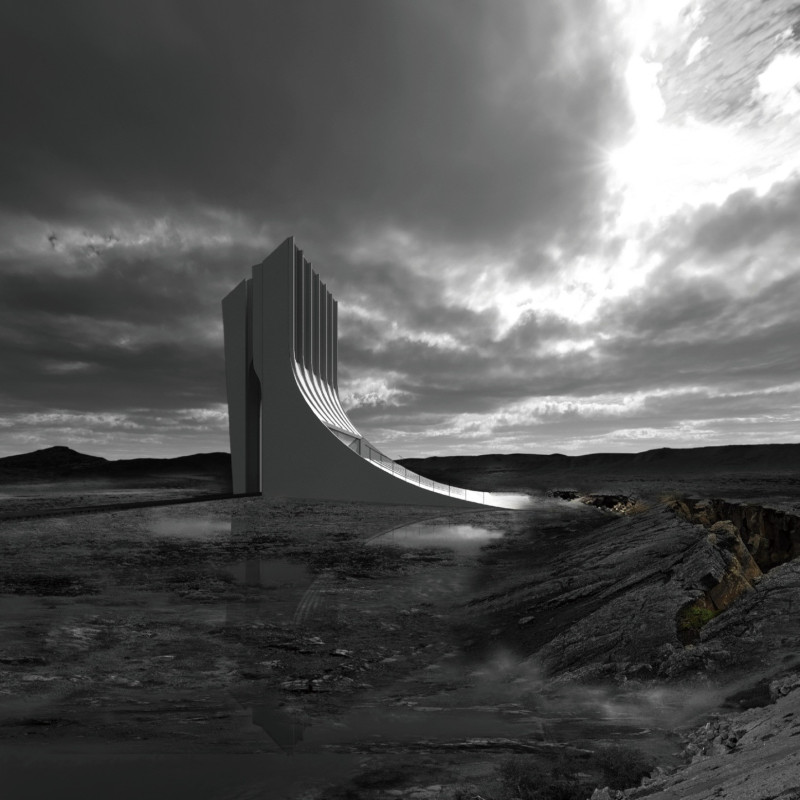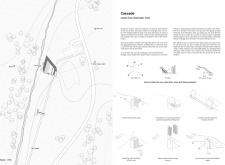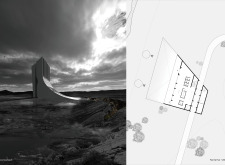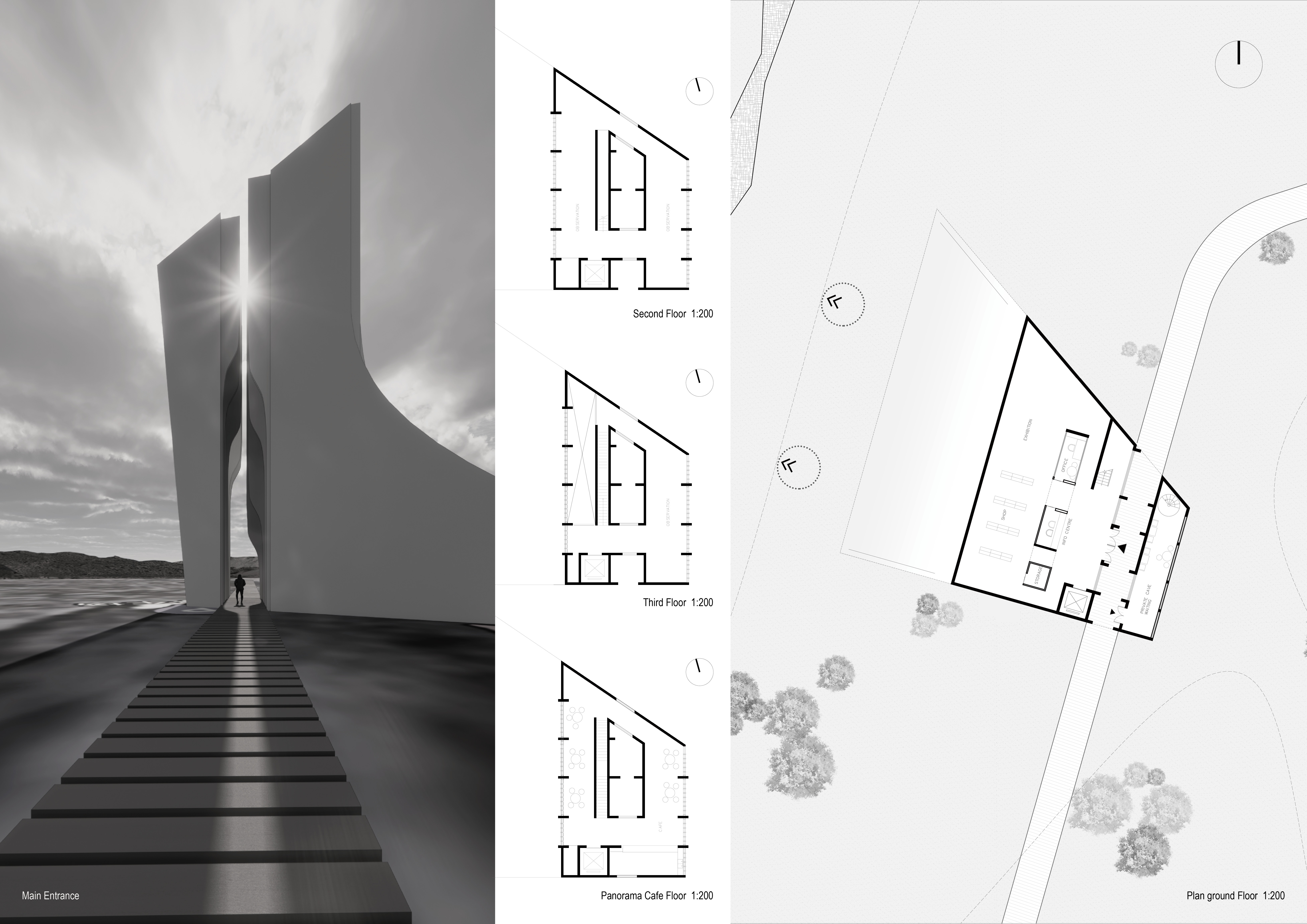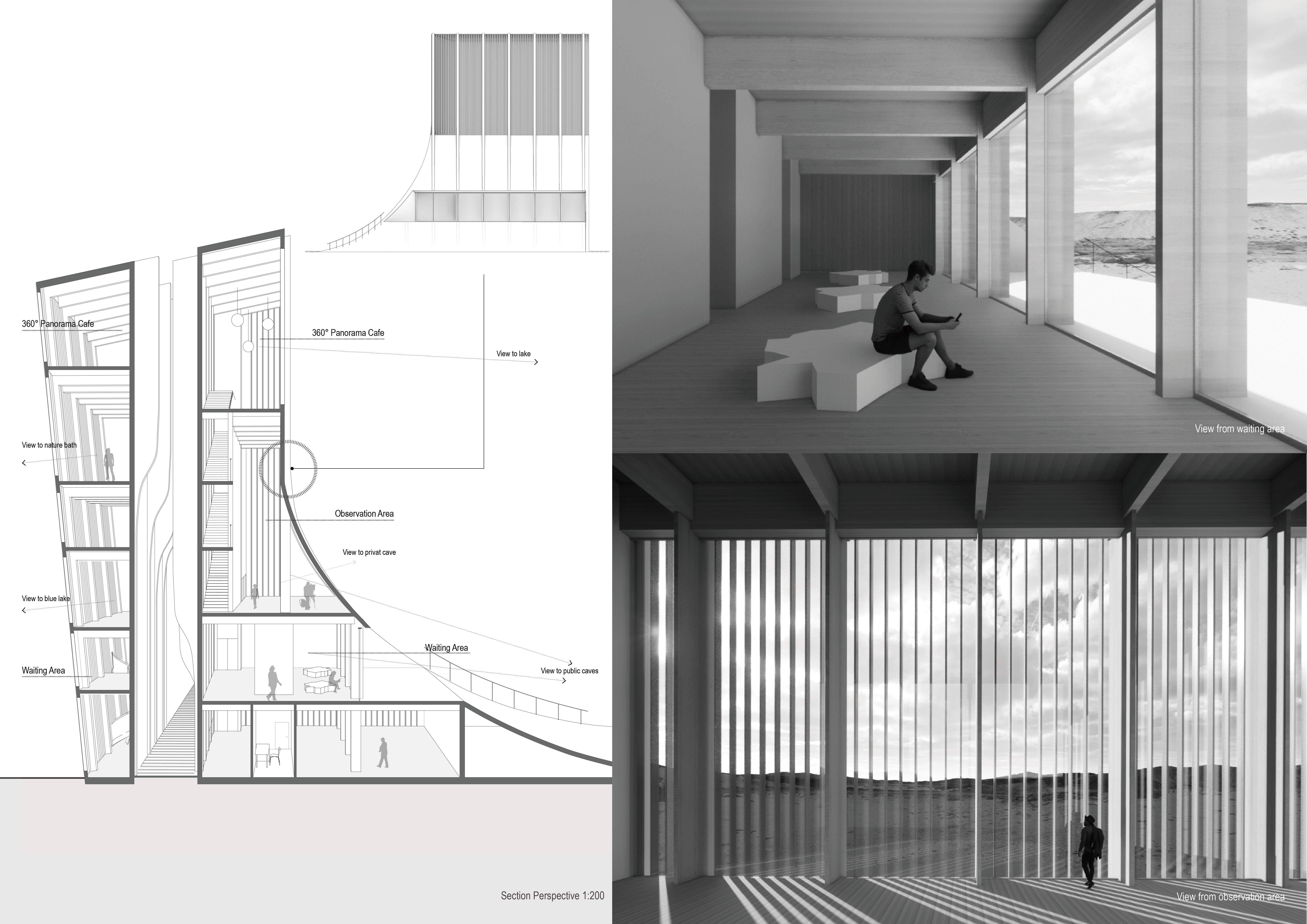5 key facts about this project
The Iceland Cave Observation Tower is located on the tectonic divide in northern Iceland, an area known for its unique geological features. It prominently includes Grjótagjá, a geothermal pool recognized for its connection to popular culture. The design integrates local geological elements into the structure, using the concept of tectonic fractures as a key theme that establishes a connection between architecture and the surrounding landscape.
Conceptual Framework
The entry to the tower is designed within a fissure of a large block structure. This placement creates a direct relationship with the environment, encouraging visitors to engage with the natural surroundings. The approach symbolizes an exploration journey, highlighting how architectural spaces can interact with and reflect the earth's geological processes.
Spatial Organization
Inside the tower, the layout promotes movement and discovery. Visitors enter on the first floor, where they can take in views of Grjótagjá before moving to higher levels. The vertical circulation enhances the experience, using stairs and open spaces to guide visitors through the building, while large windows allow natural light to flood the interiors.
Connection to Nature
An outdoor platform provides a pathway that leads toward Karlagjá, offering a view of the geothermal activity in the area. Steam rising from the cave adds an atmospheric quality to this part of the experience. This feature enhances the link between the structure and the natural environment, allowing guests to appreciate the geothermal landscape up close.
Interior Experience
The tower incorporates a central black box that directs visitors upward, inviting exploration. This enclosed space contrasts with the light-filled upper areas, encouraging curiosity as people move through the building. The roof terrace presents a clear view of Hverfjall volcano, enriching visitors' experience of the dramatic Icelandic scenery.
A well-placed skylight at the top of the structure allows daylight to penetrate deep into the interior. This design element brightens the climbing path and draws attention to the very geological formations that inspired the tower’s concept.


